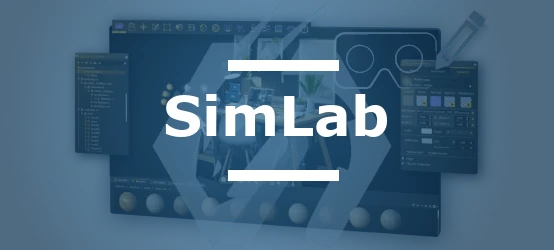Table of Contents
- History and Evolution of the STEP Format
- Technical Characteristics of the STEP Format
- Uses and Applications in Industry
- Comparison Between STEP, JT and 3DPDF
- CAD Interop Solutions Compatible with STEP
- FAQ on STEP Interoperability
- Conclusion
The STEP format (STandard for the Exchange of Product model data) is currently the reference for exchanging CAD data between heterogeneous systems. This international standard, also known as ISO 10303, was specifically designed to facilitate the representation and exchange of complex product data while preserving their integrity.
STEP offers an unambiguous representation of product data, interpretable by any computer system, regardless of the original platform. This interoperability capability is based on two fundamental elements:
- An open format, interpretable by any computer system
- Comprehensive coverage of knowledge domains related to industrial products
In an industrial environment where multi-CAD collaboration has become the norm, the STEP format has emerged as the preferred solution to ensure data consistency and streamline collaborative engineering processes.
History and Evolution of the STEP Format
Origins of an International Standard
The development of STEP began in 1984, with the ambition to create a more efficient successor to the IGES, SET, and VDA-FS formats which were showing their limitations in terms of interoperability. The format has its roots in the Product Data Exchange Specification (PDES), an American initiative launched in the mid-1980s and submitted to ISO in 1988.
The initial project aimed to create a unique, complete product information model that was independent of implementations. However, due to the inherent complexity of this ambition, the standard had to be segmented into several parts that could be developed, reviewed, and approved separately.
Development Phases
The evolution of the STEP format can be divided into several key phases:
- First phase (1984-1994): Initial development and publication in 1994/1995 of the first version as an international standard (IS) with parts 1, 11, 21, 31, 41, 42, 43, 44, 46, 101, AP201, and AP203.
- Second phase (1995-2002): Considerable extension of capabilities, mainly for product design in the aerospace, automotive, electrical, and electronic sectors. This phase concluded in 2002 with the publication of the second major version, including parts AP 202, AP 209, AP 210, AP 212, AP 214, AP 224, AP 225, AP 227, AP 232.
- Third phase (2010-present): Launch of AP 242 development in 2010, intended to replace the AP203 and AP214 protocols in the field of mechanical design, with significant improvements regarding geometric dimensioning, tolerancing, kinematics, and tessellation.
The Emergence of Application Protocols
Application protocols (AP) constitute specialized subsets of the STEP standard, each adapted to specific needs:
- AP203 (Configuration controlled 3D design): Long the most widespread protocol, supported by the majority of CAD systems for import and export until 2014.
- AP214: Widely used protocol, particularly in the automotive industry.
- AP242: Modern protocol that integrates and replaces AP203 and AP214, adding support for Product Manufacturing Information (PMI) such as geometric tolerances, Bills of Materials (BOM), and other essential metadata for Model-Based Definition (MBD).
Technical Characteristics of the STEP Format
Structure and Organization of Data
A STEP file is essentially a structured text document that encodes 3D model data in a way that is universally interpretable by different CAD systems. The fundamental structure includes several sections, the most crucial being the DATA section, which contains the effective description of the 3D object.
The format uses the EXPRESS modeling language to define the data structure, assigning unique numerical identifiers to each element of the model. For example, a line defining a point in space might appear as follows:
#10 = CARTESIAN_POINT('', (10.0, 20.0, 30.0));
This structured approach allows any STEP-compatible software to precisely recreate a 3D model, thus preserving data integrity across different platforms.
Geometric and Topological Representation
Unlike mesh-based formats such as STL or OBJ, STEP files retain the complete mathematical descriptions of geometric shapes. This characteristic is fundamental for:
- Preserving geometric precision
- Maintaining topological relationships between entities
- Retaining essential parametric information
STEP files are particularly effective at accurately representing complex geometric shapes, including curves, surfaces, and solids, while preserving their dimensions and positioning in three-dimensional space.
File Extensions and Compatibility
STEP files generally use the extensions .stp or .step. This standardization facilitates their identification and processing by various CAD software on the market. An essential characteristic of the STEP format is its compatibility with virtually all modern CAD systems, making it a true "Esperanto" of CAD.
Uses and Applications in Industry
Multi-CAD Data Exchange
The STEP format has established itself as the preferred solution for data exchange between different CAD systems. In a modern industrial environment where multiple departments or companies collaborate with heterogeneous CAD tools, STEP offers a common language that ensures the preservation of geometric information and associated metadata.
The advantages of STEP for multi-CAD exchange are multiple:
- Preservation of geometric precision during transfers between systems
- Universal support by all major CAD editors
- Reduction of interpretation errors thanks to a standardized format
- Elimination of dependency on direct converters between proprietary formats
Its adoption is particularly notable in several demanding sectors:
- Aerospace: For managing complex digital mockups and collaboration between contractors and subcontractors
- Automotive: For data exchange between manufacturers and equipment suppliers
- Industrial manufacturing: To ensure data consistency throughout the product development cycle
In a recent study, 87% of manufacturing companies indicate using STEP as a pivot format for their multi-CAD exchanges, confirming its status as the de facto standard for technical data interoperability.
Model-Based Definition (MBD)
Model-Based Definition (MBD) represents a major evolution in engineering practices by replacing traditional 2D drawings with enriched 3D models containing all the information necessary for manufacturing. The STEP format, particularly in its AP242 version, plays a central role in this transition towards the digital enterprise.
The MBD capabilities of the STEP AP242 format include:
- Complete support for 3D annotations (PMI - Product Manufacturing Information)
- Preservation of geometric and dimensional tolerances
- Preservation of references and coordinate systems
- Inclusion of bill of materials (BOM) data
- Retention of essential attributes and metadata
Using the STEP format for MBD brings tangible benefits:
- Reduction of interpretation errors in production
- Elimination of ambiguities present in 2D drawings
- Automation of manufacturing and control processes
- Data consistency across the entire digital chain
The development of AP242 Edition 2, with significant improvements for PMI representation, directly addresses the growing needs of industry in terms of MBD. This evolution allows the integration of the STEP format into Industry 4.0 initiatives, where digital continuity is essential for optimizing industrial processes.
Long-term Archiving and Data Preservation
Beyond immediate interoperability, STEP offers a robust solution for long-term archiving of CAD data. Its standardized nature and independence from proprietary formats make it a judicious choice for preserving access to technical data over extended periods.
The characteristics that make STEP an ideal format for archiving include:
- ISO standardization ensuring the format's durability
- Open and documented structure, independent of software evolutions
- Complete preservation of geometric information and metadata
- Compatibility with archiving standards such as LOTAR (LOng Term Archiving and Retrieval)
This dimension is particularly critical in industries such as:
- Aerospace and defense: where product lifecycles can extend over 50 years or more
- Nuclear energy: requiring the preservation of technical information for several generations
- Infrastructure and civil engineering: for maintenance and modifications over several decades
The use of STEP as an archiving format is part of a long-term Product Lifecycle Management (PLM) strategy, allowing companies to protect their technical heritage against software obsolescence and technological evolutions.
Comparison Between STEP, JT and 3DPDF
The STEP, JT, and 3DPDF formats represent the main options for neutral CAD data exchange. Here is a comparative analysis of their respective characteristics:
| Aspect | STEP Format | JT Format | 3D PDF Format |
|---|---|---|---|
| Origin | ISO 10303 Standard | Developed by Siemens | Developed by Adobe |
| Geometric Representation | Precise B-rep (exact mathematical description) | B-rep and/or tessellation (mesh) | PRC with B-rep and/or tessellation |
| Precision | High geometric fidelity | Variable according to export options | Generally inferior to STEP |
| File Size | Relatively voluminous | Compact (lightweight format) | Very compact |
| PMI/MBD Support | Complete in AP242 | Supported | Supported but with limitations |
| Industrial Adoption | Universal, all sectors | Primarily automotive | Technical documentation, collaboration |
| Interoperability | Excellent, open standard | Good, but dependent on Siemens toolkit | Limited to PDF-compatible tools |
| Data Preservation | Complete preservation of B-rep data | May lose information depending on configuration | Primarily oriented towards visualization |
| Standardization | International ISO standard | ISO standardized but proprietary toolkit | Adobe proprietary format |
| Optimal Use Case | Precise CAD exchange, MBD, archiving | Lightweight visualization, collaboration, large assemblies | Distribution, interactive documentation |
The choice between these formats essentially depends on the specific needs of the project. STEP remains the reference for precise technical data exchange, JT excels for lightweight visualization of large assemblies, while 3D PDF offers an optimal solution for distribution and interactive documentation.
CAD Interop Solutions Compatible with STEP
CAD Interop distributes several specialized solutions allowing to fully exploit the potential of the STEP format in different usage contexts. These tools cover all needs in terms of CAD interoperability.
3DViewStation: Advanced Visualization and Conversion
3DViewStation, developed by KISTERS, offers visualization and analysis capabilities for STEP models with optimal performance. Its latest 2025 version brings particularly relevant features for STEP format users:
- Support for recent CAD formats (NX 2412, SolidWorks 2025, Solid Edge 2025)
- Semantic conversion of PMI from CATIA to STEP for MBD projects
- New view management capabilities
- Improved performance and stability
This solution allows not only to visualize STEP models but also to convert them to other formats, thus facilitating integration into heterogeneous digital chains.
CADfix: Repair and Simplification of STEP Data
CADfix distinguishes itself particularly in the processing of STEP files by offering advanced repair and simplification functionalities for models. Its PPS 5.1 version offers considerable advantages:
- Drastic reduction in file size (up to 97% reduction)
- 90% automation of processing procedures
- Connectors for Revit, Navisworks, and SmartPlant 3D
- Accelerated processing of complex assemblies
These functionalities are particularly valuable for the energy, naval, and process engineering sectors, where the complexity of STEP models can pose significant challenges.
SimLab: Creation of Immersive Experiences
SimLab Composer 14 transforms STEP models into immersive experiences for virtual reality training, industrial prototyping, and interactive presentations. Its recent innovations include:
- Integrated artificial intelligence for procedural generation
- Dynamic collision management
- Multi-platform optimization (Quest 3, Pico 4, Varjo XR-4)
- Advanced VR training with immersive and adaptive experiences
This solution allows valorizing STEP models beyond their traditional engineering use, by integrating them into advanced interactive experiences.
CADIQ: Model Validation in Exchange Processes
CADIQ plays an essential role in the validation of STEP models, particularly crucial during transfers between different CAD systems. It allows to:
- Verify model integrity before and after conversion
- Precisely document modifications (ECO)
- Detect potential problems that could affect manufacturing
- Ensure compliance with quality standards
This solution is indispensable for guaranteeing the reliability of STEP data exchanges in demanding industrial environments.
DEXcenter: Exchange Automation
DEXcenter, now available on AWS Marketplace, offers a cloud solution for secure automation of CAD workflows, including STEP conversions. Its main features include:
- Military-grade encryption and ITAR/EAR compliance
- AI-driven CAD automation (conversions, ECO reports, producibility checks)
- Technical data packaging (audit-ready TDPs)
- Instant AWS deployment with cost efficiency and PLM/ERP integration
This solution is particularly suited for global engineering teams that need to exchange CAD data securely and efficiently.
FAQ on STEP Interoperability
Why choose the STEP format rather than a native CAD format?
The STEP format offers the advantage of being independent of proprietary CAD systems, thus ensuring optimal interoperability. Unlike native formats that are tied to specific software, STEP allows the exchange of data between different platforms without significant distortion. It is ideal for external collaboration with partners, clients, or suppliers using various CAD systems.
Which version of the STEP format should be preferred?
AP242 is currently the most advanced version and should be preferred for new projects, particularly those requiring PMI (Product Manufacturing Information) and supporting Model-Based Definition (MBD). For more basic 3D geometry exchange needs, AP203 and AP214 remain widely supported and may suffice.
How to ensure data quality during STEP conversions?
To optimize the quality of STEP conversions, it is recommended to:
- Use specialized tools like CADfix to repair and optimize models
- Verify data integrity with solutions like CADIQ
- Correctly configure export parameters in the source CAD system
- Systematically validate converted models before use in production
Is the STEP format suitable for long-term archiving?
Yes, STEP is particularly well suited for long-term archiving of CAD data. Its standardized nature (ISO standard) and independence from proprietary formats make it a judicious choice for preserving access to technical data over extended periods. This characteristic is particularly important in industries where product lifecycles span several decades.
Conclusion
The STEP format has established itself as the reference for CAD data interoperability, offering a standardized and reliable solution for exchanging complex technical information between heterogeneous systems. Its constant evolution, culminating with AP242, demonstrates its ability to adapt to the growing needs of industries in terms of digital product definition.
The technical characteristics of the STEP format, particularly its ability to preserve precise mathematical descriptions of 3D models, make it an essential tool for ensuring data integrity across the different stages of the product development cycle.
To fully leverage the potential of the STEP format, CAD Interop offers a complete range of specialized solutions, from visualization to conversion automation, including model validation and simplification. These tools enable companies to optimize their CAD data exchange processes and streamline their collaboration with partners and clients.
In an industrial context where multi-platform collaboration has become the norm, mastering STEP interoperability represents a strategic advantage for companies concerned with optimizing their digital engineering processes and ensuring the integrity of their technical heritage.






